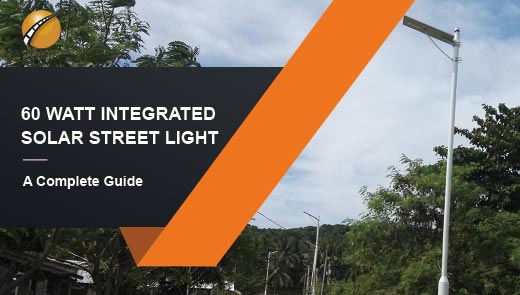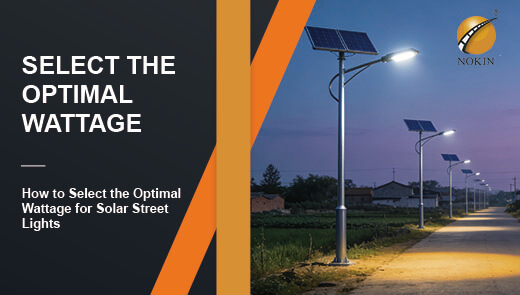Highway Solar Street light Application Guide
In modern transportation systems, nighttime driving safety on highways remains a key focus for the industry. According to relevant data, over 50% of fatal collisions on highways occur at night, while traditional grid-based lighting systems, due to their high installation complexity and risk of power outages, struggle to meet safety requirements on remote sections of highway. As an innovative off-grid lighting solution, highway solar street lights, with their independent power supply and reliable emergency performance, are emerging as the core solution to address nighttime lighting challenges. They not only maintain a 98% lighting rate during extreme weather conditions such as typhoons and blizzards but also establish a safety barrier for high-speed driving through scientific spacing design and optimized solutions for special road sections, transitioning from “passive lighting supplementation” to “active prevention.”

Core Advantages of Highway Solar Street Lights
Continuous Lighting During Power Outages
Independent power supply
Solar street lights for highway utilize a combined solar and energy storage battery system for independent power supply, completely eliminating reliance on traditional power grids. This feature ensures stable lighting even during extreme weather conditions like typhoons or heavy rain, or in the event of circuit failures. Unlike traditional streetlights that go dark during power outages, solar streetlights act as loyal “guardians,” consistently illuminating highways with safety-focused lighting.
Reliability far exceeds traditional streetlights
Take North America as an example: during a severe blizzard disaster, traditional streetlights failed en masse, while solar streetlights maintained an astonishing 98% illumination rate thanks to their independent power supply system. This data clearly demonstrates the reliability of solar streetlights under extreme conditions, providing a solid foundation for the safe operation of highways.
Key application scenarios
High-accident areas: In high-accident areas such as tunnel entrances/exits and long downhill sections, the continuous lighting provided by highway solar streetlights effectively reduces the incidence of accidents. Drivers in these areas can enjoy clearer visibility, detect potential hazards earlier, and have sufficient time to respond.
Remote Highway Sections: In some remote highway sections, the power grid may be insufficiently developed or unstable. The independent power supply feature of solar street lights enables uninterrupted lighting in these areas, significantly reducing the risk of secondary accidents. Even in remote areas where accidents occur, continuous lighting provides favorable conditions for rescue operations.
Enhancing Emergency Response Efficiency
High-intensity light penetration
Solar street lights for highway equipped with high-brightness LED light sources have exceptional penetration capabilities, effectively extending drivers' visibility distances even under adverse weather conditions such as rain or fog. Data shows that their visibility distance can reach 1.5 times that of traditional street lights. This means that in emergency situations, first responders can detect accident sites earlier, gaining valuable time for rescue operations.
Optimizing traffic flow
Under the auxiliary lighting of solar street lights, the efficiency of accident scene isolation and traffic flow guidance has been significantly improved. Clear visibility helps rescue personnel set up warning signs and guide vehicles to detour more quickly, thereby effectively reducing traffic congestion and associated risks caused by accidents. This not only ensures the smooth progress of rescue operations but also creates conditions for the road to resume normal traffic flow as soon as possible.
Remote Monitoring and Intelligent Control
Real-time dispatch
The remote monitoring system equipped with solar street lights enables real-time management of the lights through an IoT platform. Staff can remotely adjust the brightness of the lights, locate and troubleshoot faulty lights, and respond to emergency requests within 5 minutes. This high level of flexibility allows for swift adjustments to lighting schemes in emergency situations, providing the most suitable lighting conditions for rescue operations.
Assisted decision-making
The remote monitoring system of highway solar street lights can be integrated with the highway monitoring system to transmit real-time lighting data from accident sites to the command center. This data provides crucial information for decision-making at the command center, enabling more scientific and accurate decisions to effectively address various emergency situations.
Extreme scenario applications
In extreme situations such as landslides on mountainous highways, staff can activate the emergency high-brightness mode of solar streetlights via the remote monitoring system. The high-brightness mode provides clear guidance for vehicles, helping drivers avoid dangerous areas and ensuring driving safety. This intelligent emergency response capability demonstrates the significant value of solar streetlights in extreme scenarios.
Durability and Reliability
Adaptable to extreme conditions
Solar street lights for highway feature robust protective capabilities in their hardware design. They adhere to the IP67 waterproof rating standard, effectively resisting water ingress; they operate within a temperature range of -40°C to 70°C, maintaining stable performance in both extreme cold and heat; and they can withstand the impact of a Category 12 typhoon. These characteristics make solar street lights akin to “steel warriors,” capable of withstanding various extreme environments.
Low maintenance costs
The photovoltaic panels of highway solar street lights have a degradation rate of less than 20% over 25 years, ensuring long-term energy collection efficiency; lithium batteries have a cycle life exceeding 5,000 cycles, meeting the demands of prolonged use. Compared to traditional street lights, solar street lights significantly reduce maintenance costs. This not only minimizes human and material resource investment but also enhances the reliability and stability of the street light system.
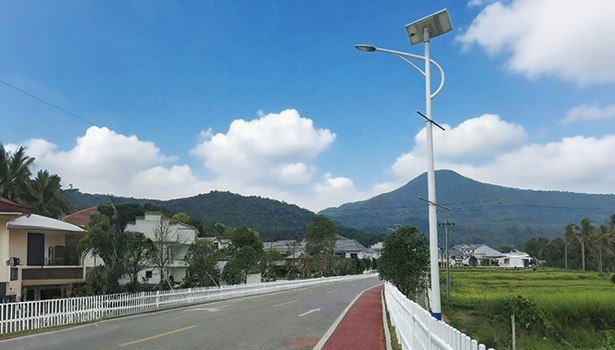
How Do Solar Street Lights Adapt to Highway ?
Key Performance Parameter Analysis
|
Core Functions |
Technical Standards |
Value in Highway Scenarios |
|
High lumen output |
≥1500lm LED light source |
Ensures drivers can clearly identify obstacles on the road from 100 meters away, providing sufficient warning time |
|
High-efficiency photovoltaic panels |
Monocrystalline silicon cells with a conversion efficiency of >22% |
Maintains 70% energy collection efficiency even in cloudy weather, ensuring the streetlights function under poor lighting |
|
Energy storage system |
Lithium iron phosphate batteries (-20°C low-temperature discharge) |
Meets cold winter weather requirements; keeps lights on even during three consecutive rainy days |
|
Smart control |
Light sensor + microwave dual sensors |
Enables intelligent adjustment: saves up to 30% energy during low traffic and adjusts brightness promptly for passing vehicles |
Installation and layout of highway solar streetlights
Installation Spacing Standards for Highway Solar Street Lights
Straight-road lighting spacing design
On straight sections of highways, the optimal installation spacing for solar street lights is 30-40 meters per lamp. This spacing is precisely calculated based on the LED light source's illumination diffusion angle (120°-150°) and the high-speed driving visibility requirement (≥100 meters), ensuring road surface illumination uniformity >0.7 and preventing driver visual fatigue caused by lighting gaps.
Optimization of spacing in curved sections
For highway curves with a curvature radius <500 meters, the installation spacing should be reduced to 20–25 meters per lamp. Due to obstructed visibility at curves, reducing the spacing compensates for blind spots by overlapping illuminated areas. Combined with a 15°–20° tilt angle adjustment of the streetlights, this allows drivers to obtain curve contour information 3–5 seconds in advance, reducing the incidence of rollover accidents caused by insufficient lighting.
Customized Installation Solutions for Special Sections
Bridge section wind resistance and lightning protection special design
Wind-resistant bracket technology: High-strength steel welded brackets are used, significantly enhancing wind resistance. The bracket bases are bolted to the bridge's embedded components to enhance stability.
Lightning protection grounding system: The lamp posts are equipped with hot-dip galvanized grounding electrodes, combined with surge protectors (SPD) to provide dual lightning protection for power and signal lines, significantly reducing the risk of lightning strikes.
Tunnel entrance brightness gradient control technology
By gradually adjusting the brightness of highway solar street lights at tunnel entrances and exits, drivers' vision can transition smoothly, reducing visual fatigue and discomfort and improving driving safety. Specific adjustment plans can be discussed with your solar street light supplier, taking into account local climate and lighting conditions, as well as the length and location of the tunnel.
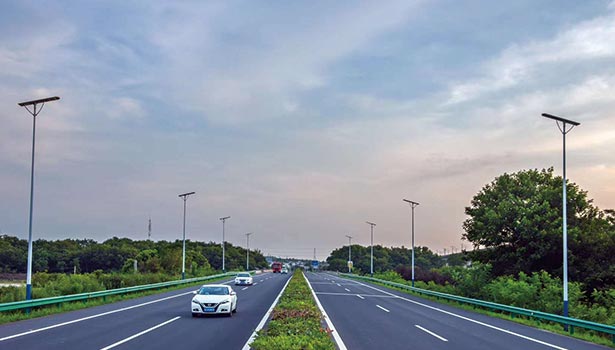
Sustainability and Cost-effectiveness of Highway Solar Street Lights
Life Cycle Cost Advantage
It is undeniable that the initial investment in solar street lights for highway is higher than that of traditional street lights. However, from a life cycle perspective, over the course of a decade or more of use, the advantages of solar street lights—such as zero electricity costs and low maintenance costs—make their cost advantages increasingly evident throughout their entire life cycle, and these advantages continue to grow as the usage years increase.
Energy Conservation and Emission Reduction
A single highway solar street light can reduce carbon emissions by an average of 1.2 tons per year, equivalent to the annual emissions of three passenger cars. If a solar lighting system is fully deployed across a 100-kilometer highway section, annual carbon reduction could reach 1,200 tons, with environmental benefits equivalent to the carbon sequestration capacity of planting 6,000 trees. This data not only aligns with the carbon neutrality goals of the Paris Agreement but also provides a core driving force for upgrading transportation infrastructure from “functional” to “environmentally friendly” through the visualization of ecological value.
Policy Incentives
Major global economies are currently promoting the application of renewable energy through a combination of policies:
Fiscal Subsidies: China's “dual carbon” policy provides initial investment subsidies of 30%-50% for highway solar projects;
Tax incentives: EU member states exempt solar equipment from value-added tax (VAT), with some countries even offering a 10-year corporate income tax exemption;
Special funds: The U.S. Infrastructure Investment and Jobs Act established a $25 billion Green Transportation Fund, prioritizing support for low-carbon infrastructure such as solar streetlights.
These policy measures significantly reduce initial funding pressures, shortening the payback period for solar streetlights on highways to 3-5 years and further accelerating industry penetration.
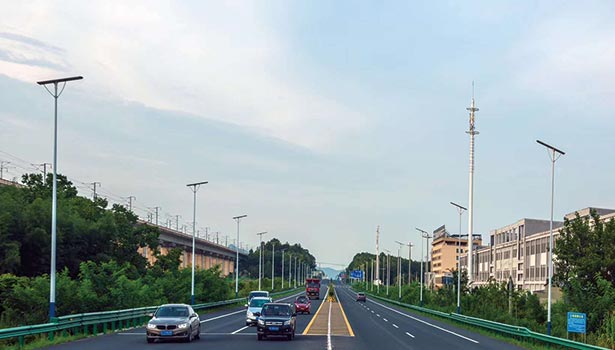
Conclusion
The application of solar street lights on highways addresses the challenge of highway lighting while upgrading from merely illuminating roads to ensuring safety. In the face of extreme weather, sudden accidents, and other challenges, highway solar street lights' sustainable lighting, efficient emergency response, and intelligent management capabilities provide a solid backbone for drivers and rescue personnel, improving rescue efficiency and reducing accident risks. Solar street lights for highway have become an indispensable component of the highway safety system.

